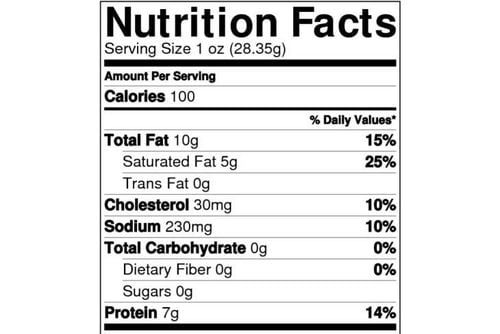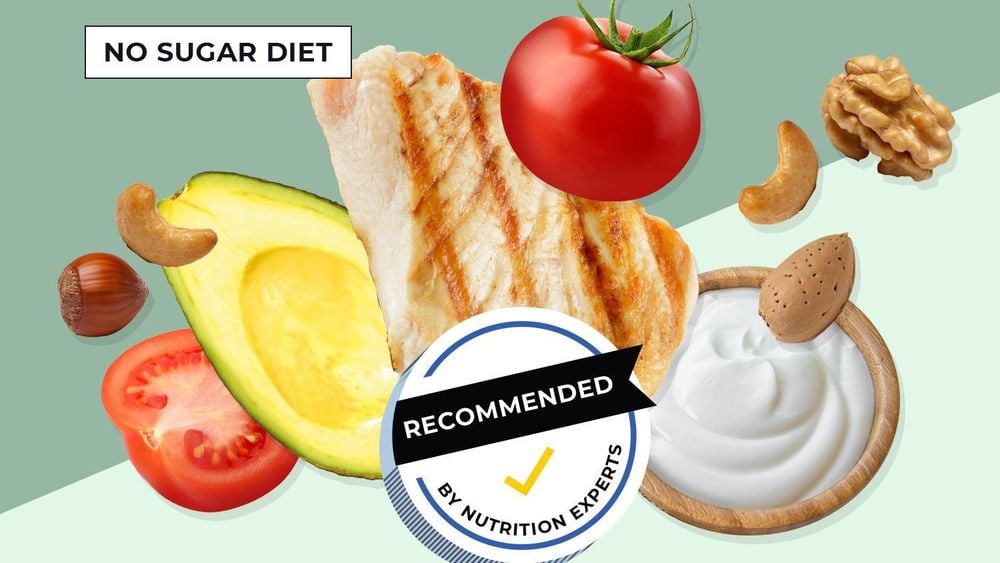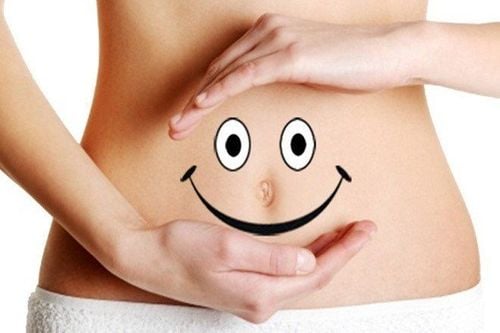This is an automatically translated article.
Consuming too much sugar can lead to obesity, diabetes, heart disease, increased inflammation in the body, high cholesterol, high blood pressure. By adopting a sugar-free diet, the risk of these health conditions is significantly reduced. This article will provide additional instructions on how to get started on a sugar-free diet, food selection tips and sweet alternatives to try, and more.
1. Start gradually
The first key to this process is creating a healthy eating plan. For many people, this process means starting slowly. Think of the first few weeks as a period of using less sugar instead of no sugar at all. Your taste buds and palate can be adapted to a lower-sugar diet, and eventually you won't crave high-sugar foods as much as before.
During this time, you can still eat foods with natural sugars such as: Fruits, as they are packed with nutrients and fiber. Once your routine has developed, you should start making changes to your diet to reduce your sugar intake.
Many people face sugar withdrawal within the first week, so if you're feeling cranky or craving sugar, you're not alone. Making small changes like these can help reduce cravings and put you on the path to success.
2. Clearly cut out sugary food sources
You don't have to read food labels to know that sugary sweets are over the limit. You will cut out food sources that contain sugar, including:
Breakfast pastries: Muffins and coffee cakes Cakes: Cookies and cakes Frozen foods: Ice cream and sorbets You should also be aware that Some foods with natural sugars are often nutrient-dense, high in fiber and can be part of a healthy, balanced diet. However, as you settle into your new routine, you can also eliminate foods high in naturally occurring sugars from your diet and will help your brain crave less food. These include:
Dried fruit: Dates and raisins Yogurt with added fruit or other flavors Milk

Không nên ăn các loại bánh quy, bánh ngọt
3. Start reading food labels
When transitioning to a sugar-free lifestyle, you will begin to read food labels to eliminate foods that have hidden sugars in foods including: Baked beans, crackers, banh tet, boxed rice, frozen foods, cereals such as bread, rice and pasta.
There are a few things you should keep in mind:
Sugar is usually measured in grams on the label. Four grams is equal to one teaspoon. Some foods, such as: Fruit, don't have an ingredient label, which means you'll have to look up nutritional information online. Nutrition labels will soon have more information to help you make an informed decision. The new label must list both total sugar and added sugar. Reading store labels can be confusing, so you might want to do some research beforehand.
4. Learn the code names of sugars on food labels
Sugar has many names when it comes to food labeling and you'll need to learn all of them to completely eliminate it from your diet.
As a general rule, you should look out for ingredients that end in "ose" - these are usually sugars. For example: glucose, maltrose, sucrose, dextrose, fructose, lactose. In addition to clearly labeled sugars, such as malt sugar, this substance can be in many other forms including:
Molasses Agave syrup, such as corn, rice, malt and maple Fruit juice Maltodextrin concentrate

Đọc kỹ nhãn thực phẩm trước khi sử dụng
5. Avoid using artificial sweeteners
Artificial sweeteners can be 200 to 13,000 times sweeter than real sugar, possibly tricking your brain into thinking you're actually eating sugar. In the long run, these substitutes can stimulate sugar cravings, making it difficult to stick to your eating plan.
Although they are often marketed as a sugar substitute for cooking and baking, they are commonly used as ingredients in a number of food products. Ingredients to watch for include: Saccharin, aspartame, neotame, sucralose, acesulfame potassium
Typically, sugar substitutes are found in products sold as sugar-free, low-sugar, or low-calorie.
6. Don't drink foods with a high risk of sugar content
Sugar can be found in: Soft drinks, fruit juices, flavored coffees, flavored milks, flavored teas, hot chocolate, tonics, cocktails and after-dinner liqueurs There are also many roads. Wine, even when it's dry, contains natural sugars derived from grapes.
7. Choose sugar-free foods
Many foods and beverages come in sweetened and unsweetened varieties. In most cases, the sweet form is the default product. There isn't usually any indication of a sweetener's ingredients beyond the ingredients list. The "sugar-free" symbol on the label is usually an indication that the item contains no added sugar. However, the drink or food may still have natural sugars. Be sure to read labels carefully before making dietary sweetener choices.

Lựa chọn sản phẩm kỹ càng
8. Add more flavor to food without adding sweetness from sugar
Eliminating sugar from your daily diet does not mean eliminating taste. Look to spices, seasonings and other natural ingredients to add variety to your meals.
For example, drop a cinnamon stick in your coffee or sprinkle the spice over a cup of unflavored yogurt.
Vanilla is also considered an optimal choice in providing flavor to dishes. Extracts can add delicious flavor to foods you've previously sweetened with sugar.
9. You should ensure adequate nutrition from food sources that do not contain sugar
When eliminating foods high in natural sugars or sugar-free diets, such as: Fruits, it is important to add other foods to provide adequate nutrients for the body.
For example, the common nutrient composition in fruit often contains a lot of vitamin A, vitamin C and fiber. Vegetables can be an easy substitute for many servings of fruit. Eat a variety of vegetables of different colors to make sure you're getting all of your nutrients. Each food color will represent a different nutrient that the body needs.
You may also want to add a daily supplement to your routine. Talk to your doctor about your diet plan and how you can best meet your nutritional needs.
10. Let's turn sugar into an opportunity to change eating habits
The complete elimination of natural and added sugars is not an easy thing to do. If the thought of never eating a piece of birthday cake is overwhelming, know that abstaining entirely may not be necessary. The American Heart Association recommends limiting added sugars to nine teaspoons per day for men and six teaspoons per day for women.
As you improve your taste buds, your desire for sweeter foods will be reduced. When adding sugar back into your diet, start with natural sugars, like those found in fruit. You'll find these taste sweeter and they'll be more satisfying once you've gone through the sugar removal process.
A completely sugar-free serving is not for everyone. However, limit sugar for a short period of time. You may want to change your sugar-free diet to a low-sugar diet from week to week. You can also try avoiding refined sugars but reintroducing natural sugars, like those found in fruit, back into your diet. Regardless of how you reduce your sugar intake, a concerted effort to do so can have a positive effect, possibly leading to cleaner skin, increased energy levels, and reduced excess weight. excess that you are carrying. These health benefits will only add up in the long run.
Please dial HOTLINE for more information or register for an appointment HERE. Download MyVinmec app to make appointments faster and to manage your bookings easily.
Reference source: healthline.com













